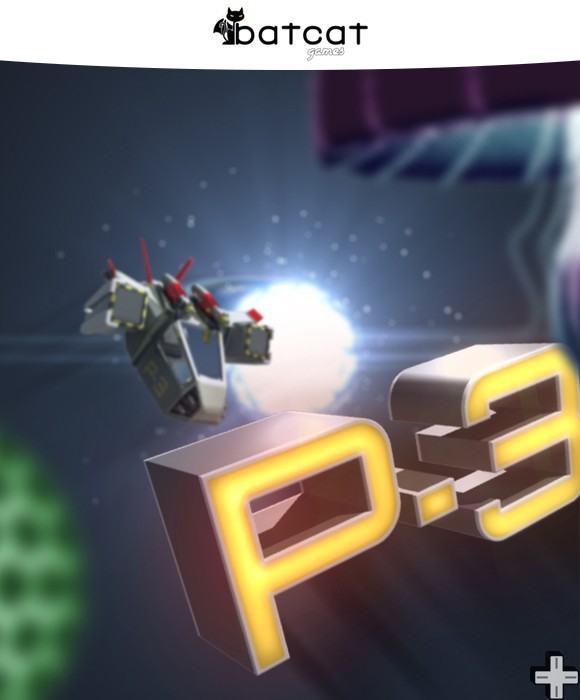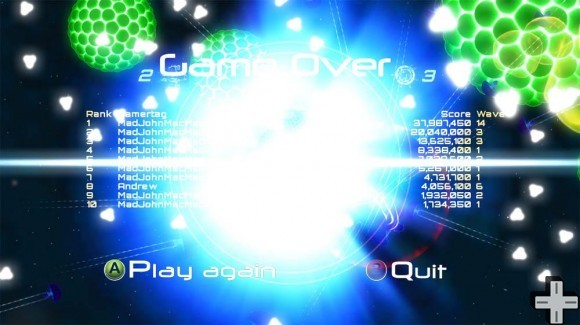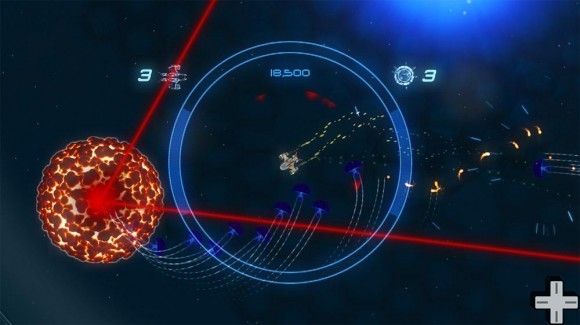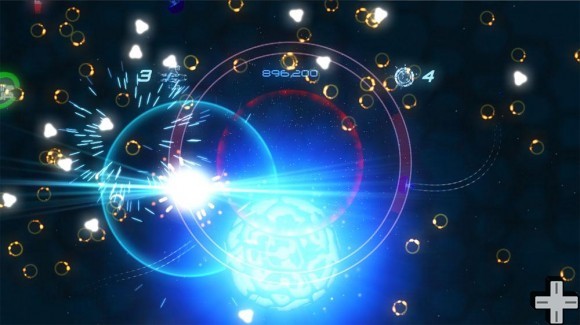P-3

Asteroids, it’s a videogame that’s existed for longer than some people’s living memory. A game that’s well over 30 years old and still manages to hit the Top 100 videogames list on a regular basis, so it’s inevitable that over the years there would be a clones created. Yet, to say that P-3 is a clone of Asteroids is an unfair and unjust comment. It’s certainly been inspired by the 1979 Atari classic, but it’s taken the best bits of Asteroids and created something that has the potential to surpass it.
Whereas Asteroids, Space Invaders and most shooting games take place in space, P-3 takes this to the next minute level. It’s managed to acquire some form of alien-grade technology and allow us to see down to the tiny atom level and see the tiny nano-ship flying around a Petri dish defending a nucleolus from attack from hordes in evil, invading bacteria. Yes, P-3 has moved the genre under a microscope and left space to the future.
So whilst the storyline might be out of a sci-fi novel, the gameplay is far less inventive. To be fair, the storyline isn’t actually explained “in-game”, P-3 starts where it finishes, in the Petri dish with an option to bypass the brief, but helpful tutorial altogether. As with all games of this type, the difficulty is staggered and whereas some games of this type have random spikes in difficulty, P-3’s gradient is very gentle.
Almost too gentle, even if the tutorial is skipped, the game isn’t hard to play and there are plenty of power ups littered across the Petri dish. Which are either bombs, ways to increase speed, ways to improve the weapon and naturally there’s the medipack. The most effective and useful power ups are the medipack and the weapon upgrade, a skilled pilot will not even need to collect a medipack as the weaponry makes such as significant jump it’s almost impossible to die early on. Whilst the nucleolus has to be left alone to collect these valuable items, the onscreen map clearly identifies when an anti-body is getting a little too close to the nucleus. That and if the nucleus is left alone for a bit it’s not the end of the world as it has plenty of life anyway.
The nucleus has it’s own protection mechanic and whilst it takes some time to get used to, it’s also self-damaging so it must be used with caution. At first it’s hard to tell what’s happening due to the way the weapon is shown, but this is mostly due to the presentation of the game in it’s sci-fi science world rather than a graphical complaint. The visuals, whilst not an epic SquareEnix masterpiece, are solid sci-fi and compliment the title well.
The longer the game is played, the higher the score gets and whilst this would be great if it were a multiplayer game, or even had an online leaderboard, P-3 is all about the solo play and this automatically takes away some of the fun. Games with insane high scores are all about bragging rights and the lack of a leaderboard has removed this, coupled with the lack of Achievements and P-3 is missing it’s key audience.
This is disappointing as whilst P-3 has used the standard twin-stick controls, it’s been done with finesse and a polish that makes it stand up and be noticed. The controls are brilliantly tuned and whilst the difficulty curve is just a little on the easy side, once a few levels have passed it does become increasingly challenging. This is coupled with well designed graphics, makes P-3 a game that should’ve been a great game, but failed as the audience was missed.










